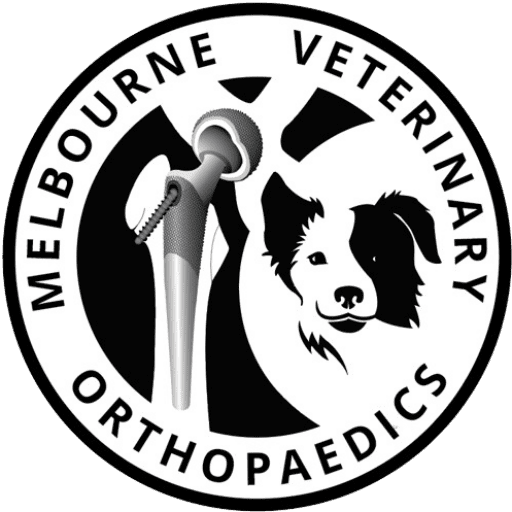Fractures & trauma
“There are few fractures that cannot be repaired by a skilled orthopaedic surgeon. Bones are alive and are capable of healing if rigid fixation is applied. At MVO we strive to avoid amputation if at all possible … the cat above was found six months after being hit by a car … you can see the severe displacement and two breaks to the femur. This was repaired carefully using an interlocking nail just like in human surgery”
Founder of MVO
Types of Fractures
Simple fracture
- Description: The bone breaks but does not pierce the skin.
- Symptoms: Pain, swelling, and lameness in the affected limb.
Compound fracture
- Description: The broken bone punctures the skin, creating an open wound.
- Symptoms: Severe pain, visible bone ends, and risk of infection.
Comminuted fracture
- Description: The bone is shattered into multiple pieces.
- Symptoms: Severe pain and instability in the limb.
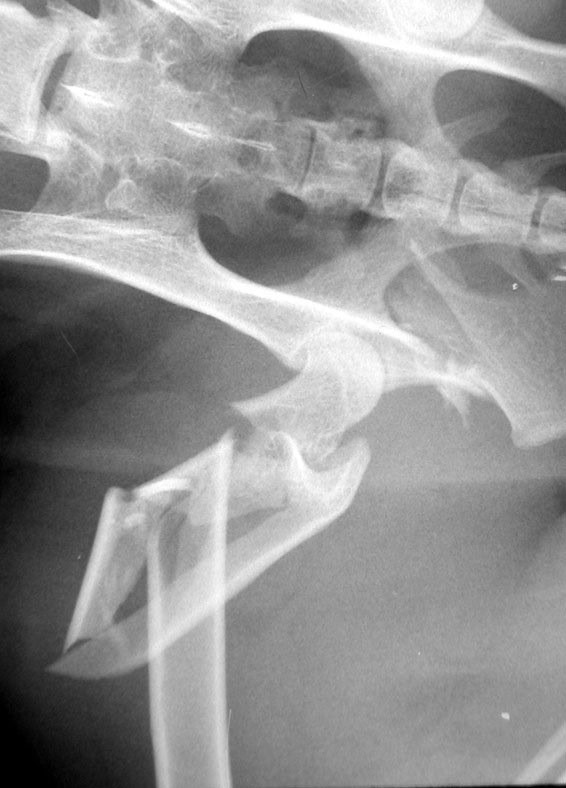
This Labrador sustained road trauma.
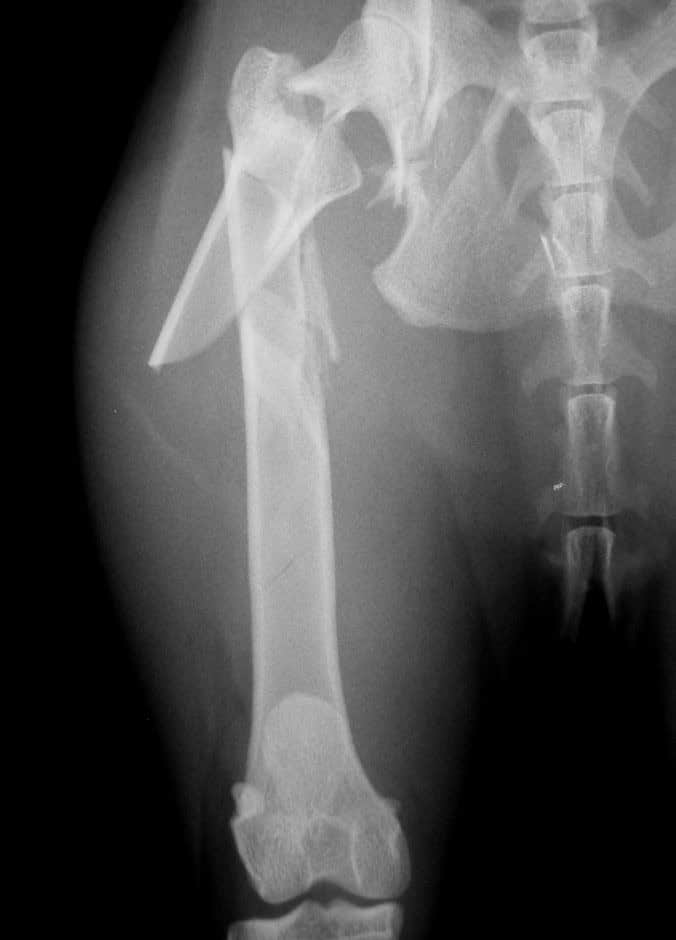
The femur bone is badly broken into several large fragments.
Greenstick fracture
- Description: The bone is partially broken, with one side cracked while the other side remains intact, similar to bending a green twig.
- Symptoms: Pain and swelling, often seen in young or growing dogs.
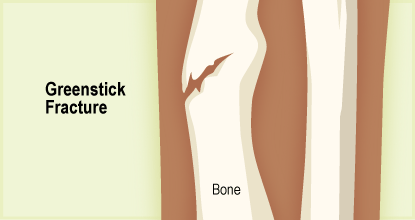
Transverse fracture
- Description: The fracture line is perpendicular to the bone’s axis.
- Symptoms: Immediate pain and inability to use the limb.
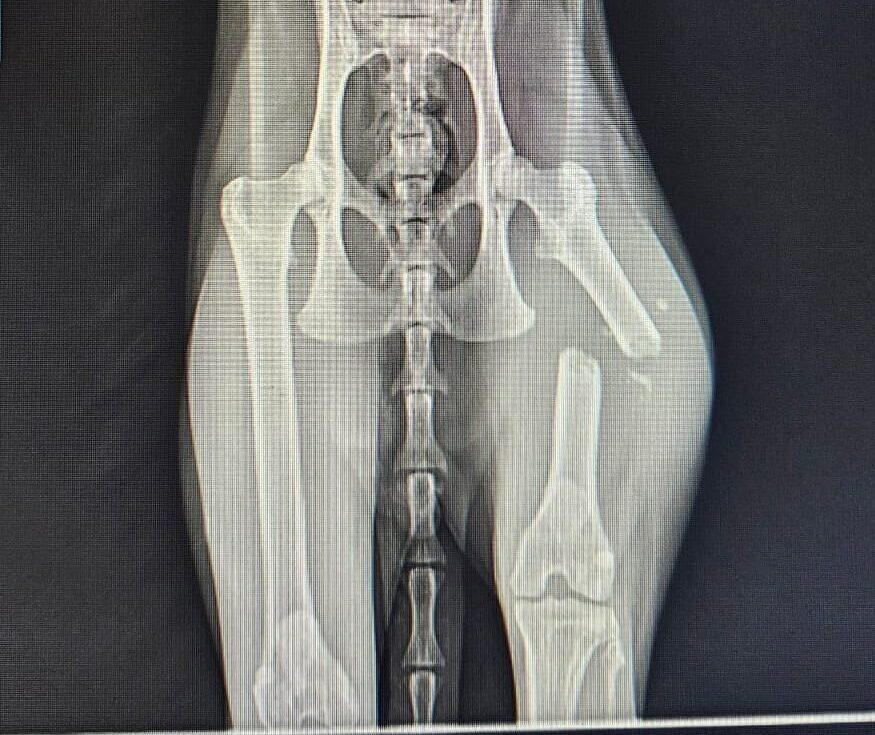
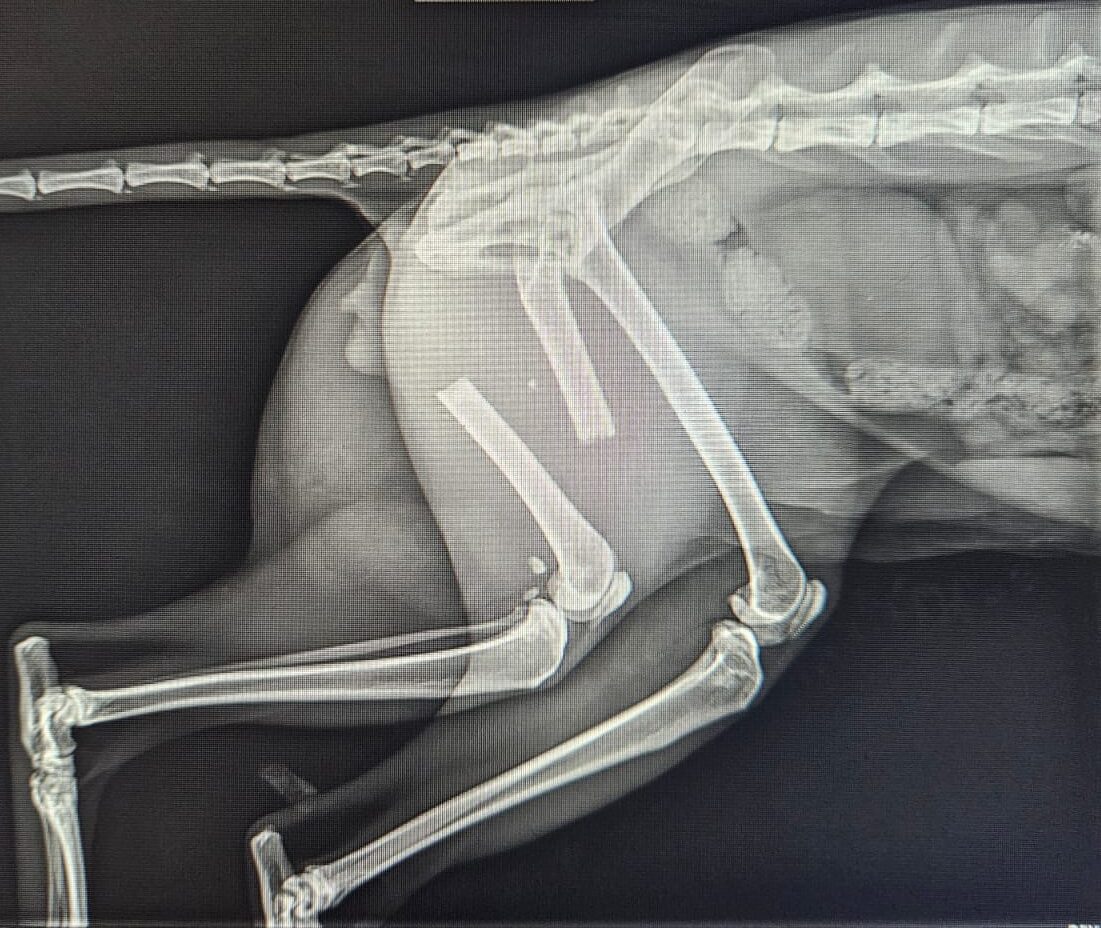
Male cat with mid shaft transverse femur fracture after a fall
Oblique fracture
- Description: The fracture line is diagonal to the bone’s axis.
- Symptoms: Pain, swelling, and potential angulation of the limb.
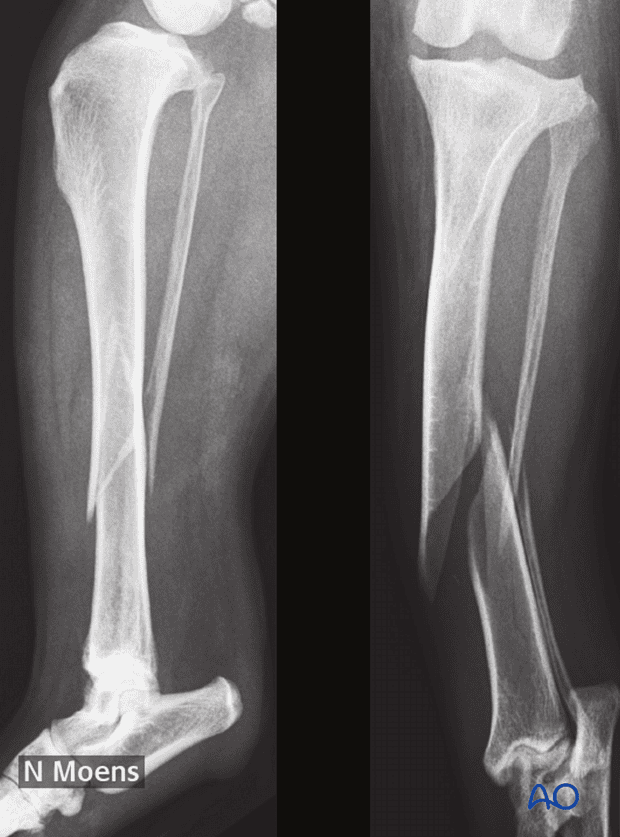
Spiral fracture
- Description: The fracture line twists around the bone, often due to rotational forces.
- Symptoms: Severe pain and limb deformity.
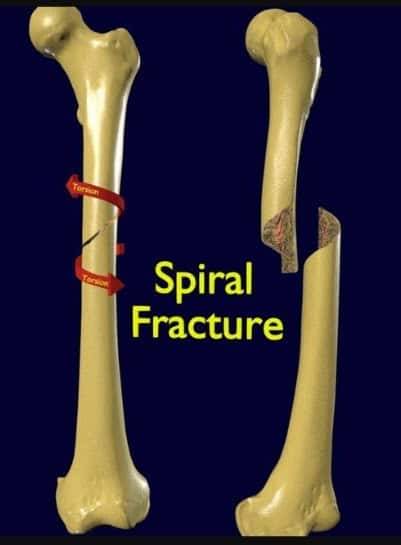
Causes of fractures and trauma
- Accidents: Traffic accidents, falls, or blunt trauma from collisions.
- Falls: Injuries from jumping or falling from heights.
- Trauma: Physical abuse, fights with other animals, or rough play.
- Sports injuries: Injuries from activities such as agility or hunting.
- Underlying conditions: Bone diseases like osteoporosis or cancer can make bones more susceptible to fractures.

Symptoms of fractures and trauma
- Pain: Noticeable pain, especially when the affected area is touched or moved.
- Swelling: Swelling and bruising around the injury site.
- Deformity: Visible deformity or angulation of the limb.
- Lameness: Difficulty or inability to bear weight on the affected limb.
- Limited movement: Reduced range of motion in the affected joint or limb.
- Shock: Signs of shock, including rapid breathing, pale gums, or lethargy, particularly in severe cases.
Diagnosis
- Physical examination: A veterinarian will assess the dog’s gait, palpate the injured area, and check for pain, swelling, and deformity.
- Imaging: X-rays are typically used to confirm fractures and assess their severity. In some cases, CT scans or MRIs may be needed for detailed evaluation, particularly for complex fractures or joint injuries.
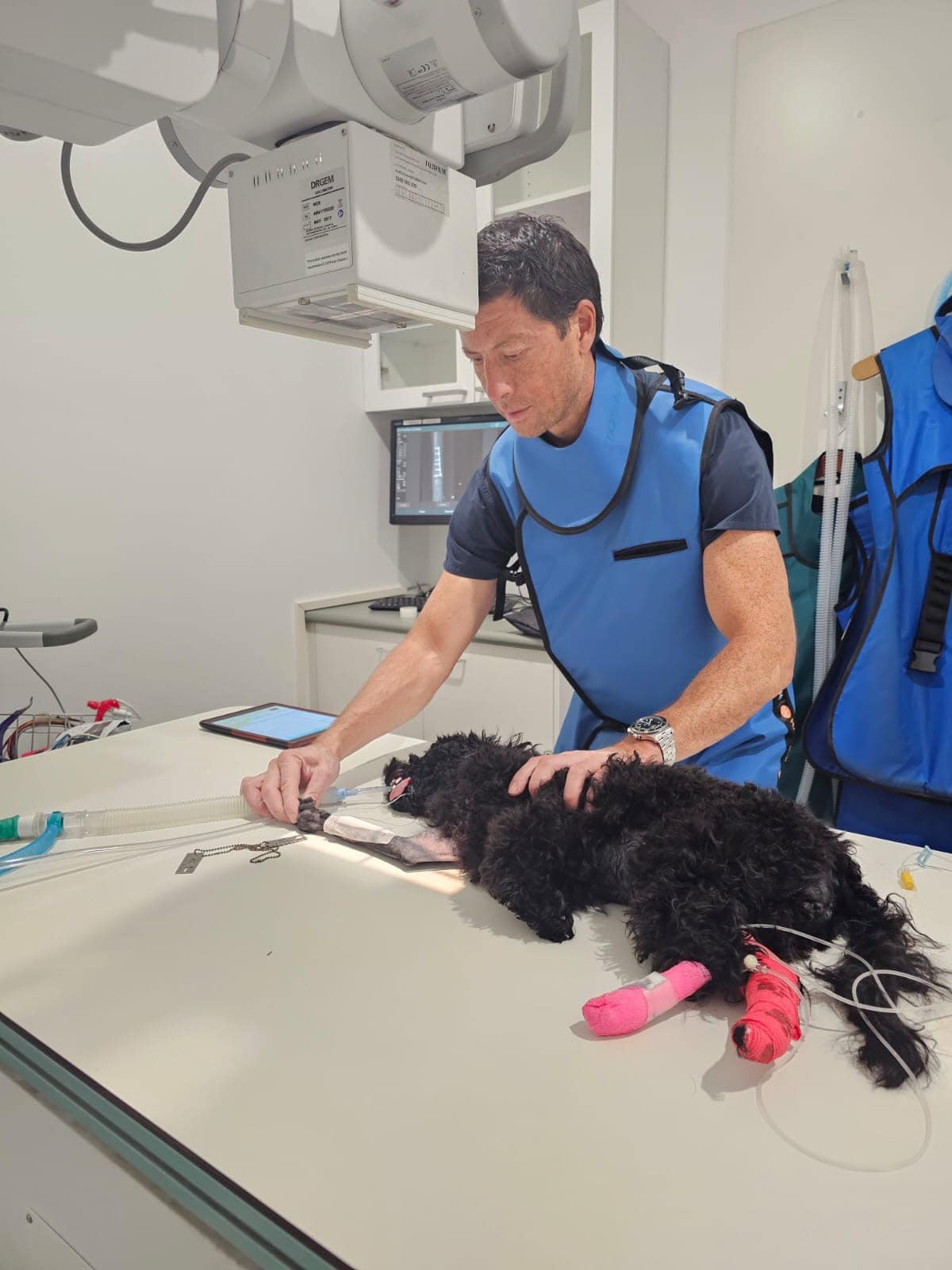
Dr Chris taking leg x-ray of first MVO patient after orthopaedic surgery
Treatment options
Fracture Assessment Score
There are many objective and subjective factors to consider when deciding if surgery is recommended and what type of surgery to perform.
- Patient:
- Age, breed, BCS, health status
- Body weight
- Level of activity
- Previous surgery
Some dog breeds are notorious for certain medical conditions. This breed is susceptible to forearm fractures due to extremely long thin legs.
- Client:
- Home environment / compliance
- Work schedule / commitment
- Financial limitations / family values
- Single vs multiple pet household
- Surgeon / Hospital:
- Availability of equipment, implants
- Training / experience / skill of surgeon
- Time constraints
- Availability of support staff
- Fracture:
- Infection: skin, open #
- Soft tissue coverage
- Preservation of blood supply
- Involvement of multiple limbs
- Level of comminution
- Joint involvement
- Technical difficulty
Non-surgical treatment
- Immobilization: Use of splints, casts, or bandages to stabilize the fracture and promote healing.
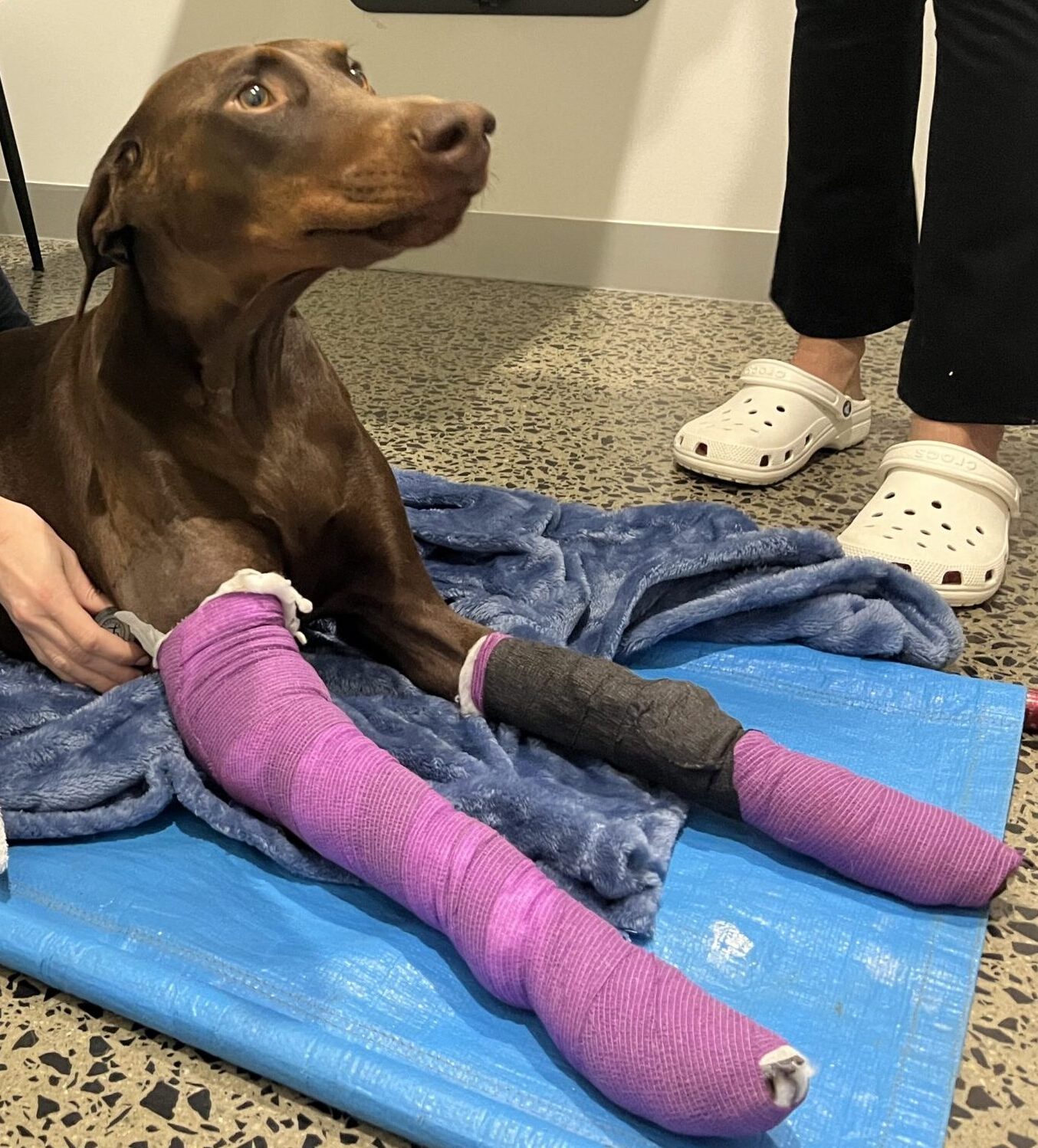
- Pain management: Pain relief can be achieved through the use of various medications designed to reduce inflammation and manage discomfort.
- Rest: Strict confinement to prevent movement and allow the fracture to heal.
Surgical treatment
Surgery may be required for complex fractures or those that cannot be effectively managed with immobilization alone:
- Internal fixation: Use of metal plates, screws, or pins to stabilize the fracture internally.

Schematic of plate and screw fixation of longbone to bridge zone of fracture
- External fixation: Application of external devices to stabilize the fracture, often used in conjunction with internal fixation.
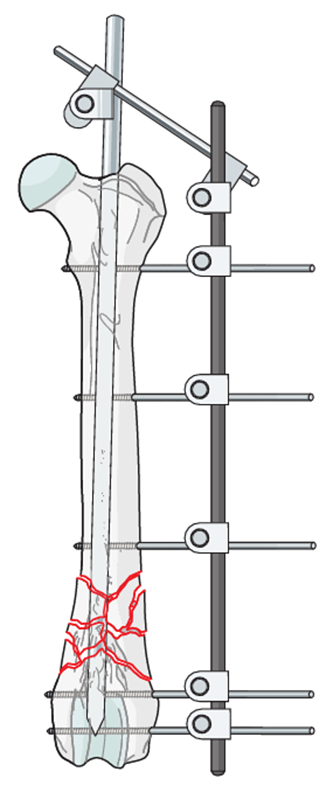
- Open reduction: Joints allows mobility when two bones interact. Joints can luxate or dislocate following trauma. Closed reduction and application of a sling or bandage can be used in some cases. More severe trauma or failure of closed reduction warrants open stabilisation. Here we see a typical hip luxation which is repaired with a false ligament (Toggle Pin technique)
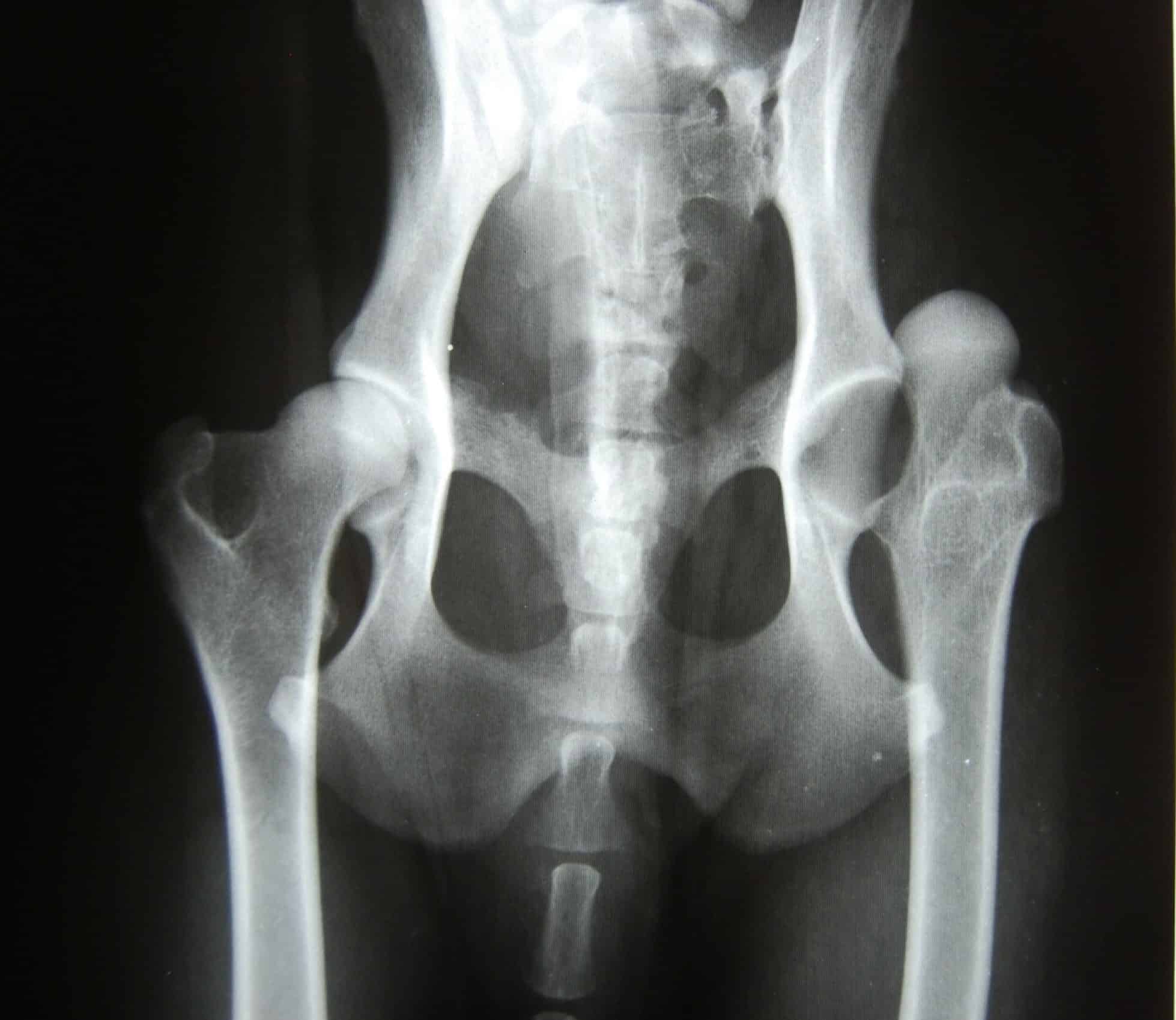
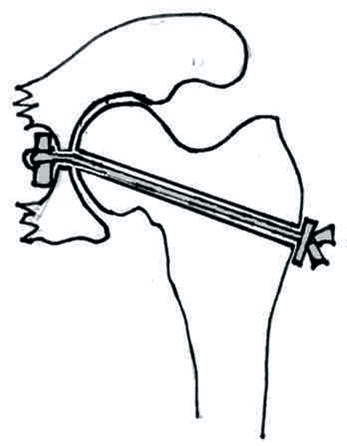
Pelvic Fracture
The ileum bone connects the hindlimb to the spine. This is called the weight bearing axis. This canine patient had a displaced pelvic fracture that was repaired with a contoured bone plate and screws.
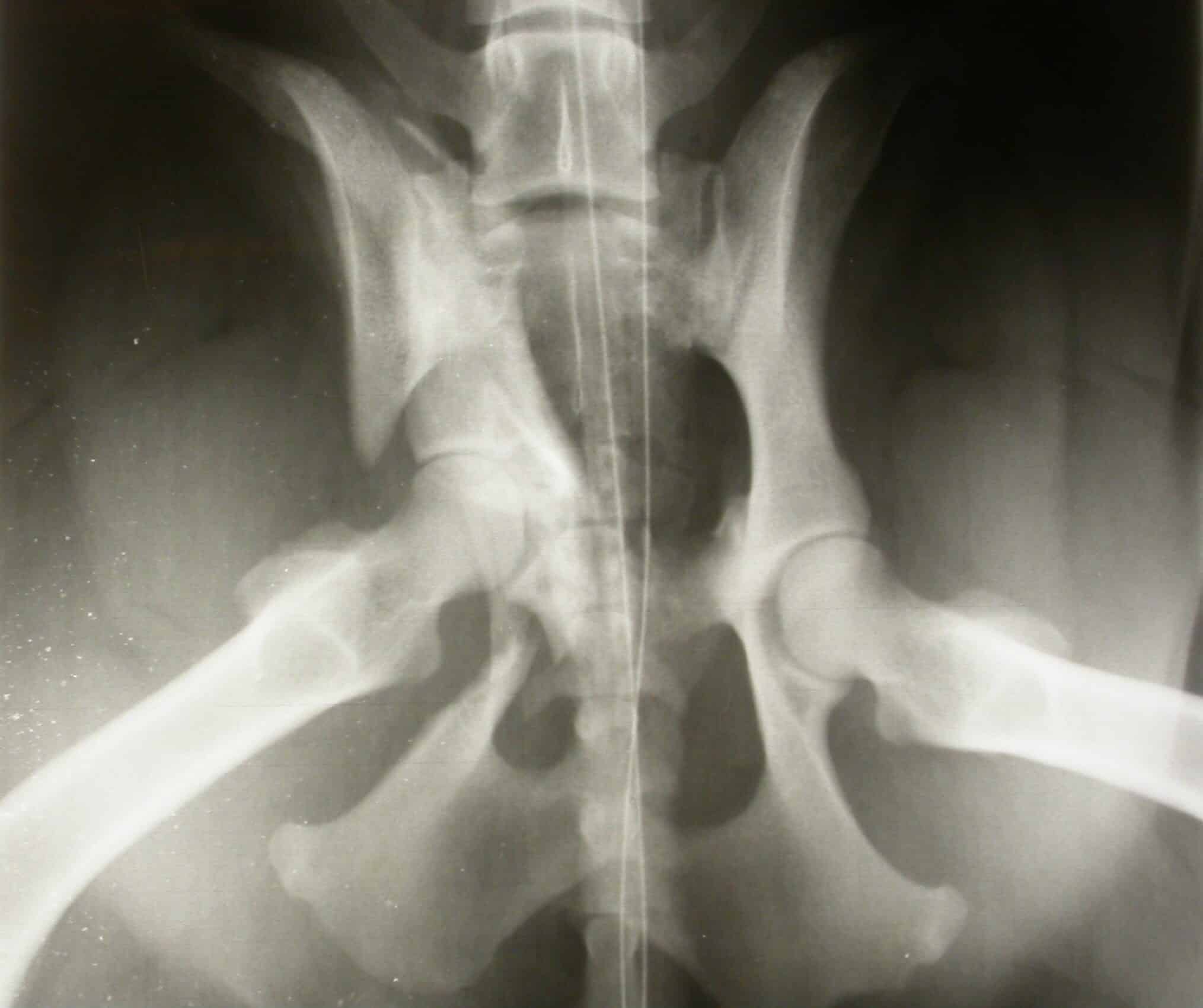
pelvis fracture pre-op
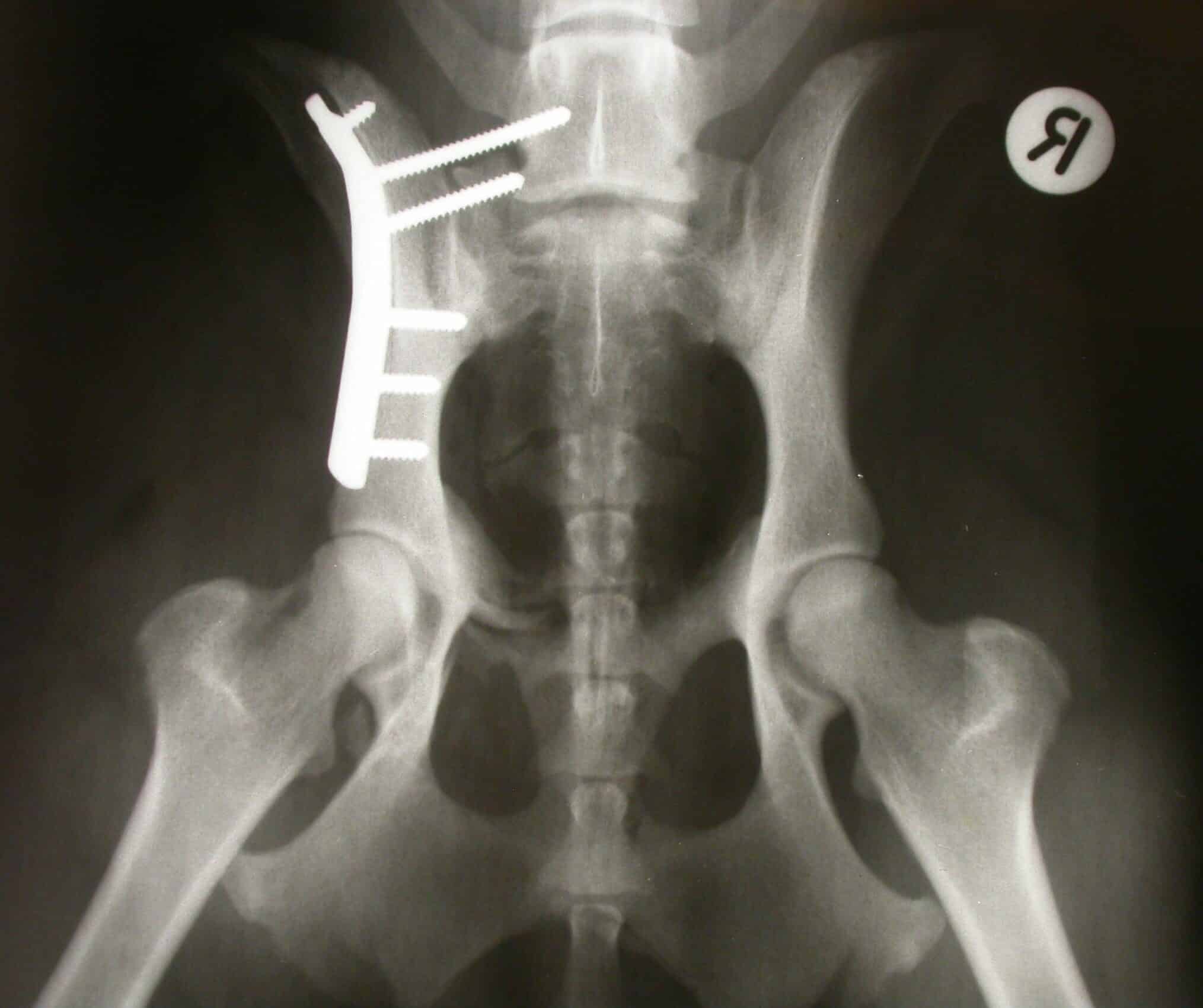
pelvis fracture post-op
Humeral Condyle Fractures
Basic = one side
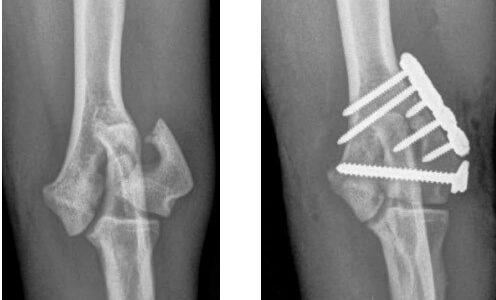
ORIF humerus Complex = both sides


Hock Fractures
Greyhounds but also other breeds often dislocate their tarsus. The tarsus is a dog’s foot. We apply a low profile plate to support the foot once it is aligned.
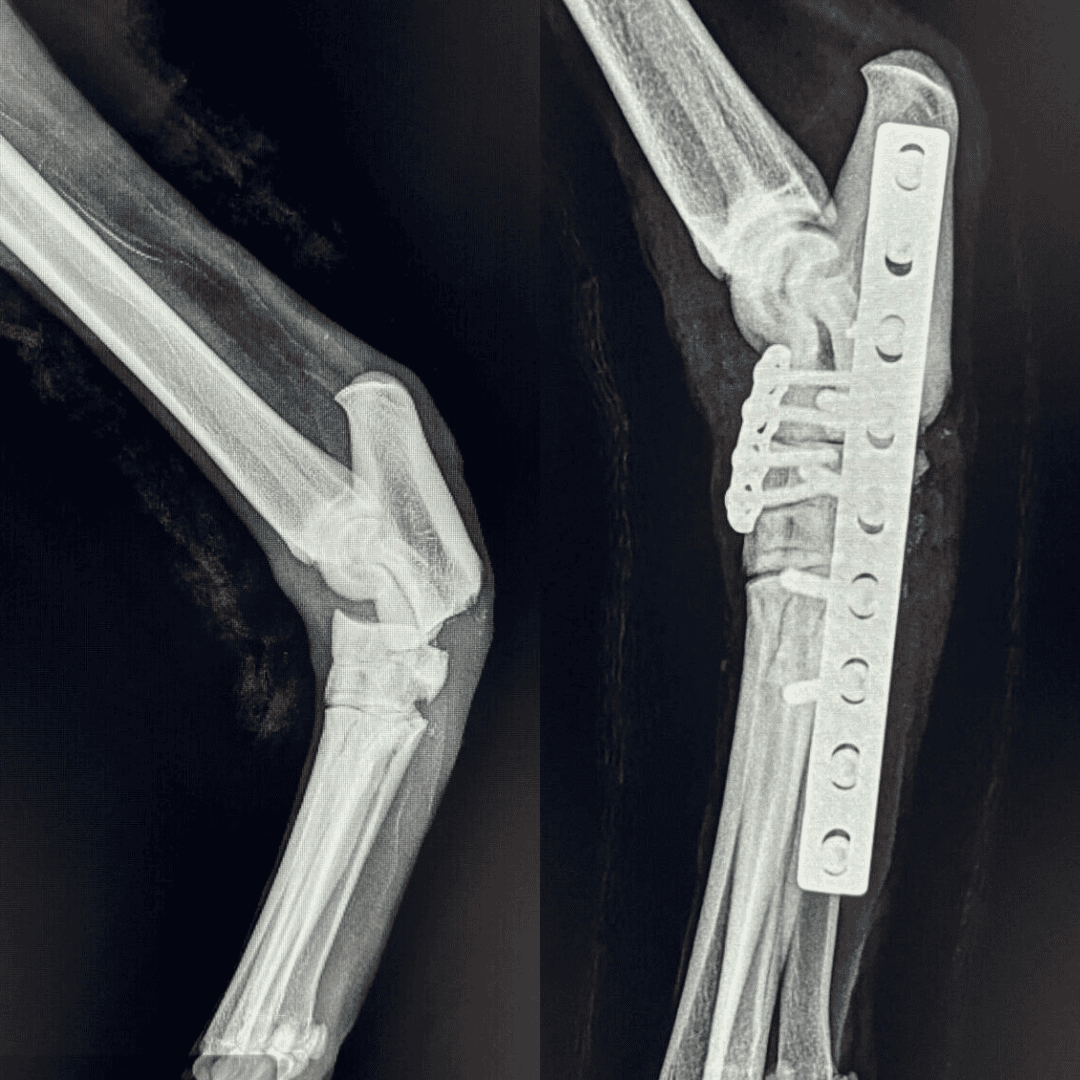
External Skeletal Fixation
A temporary metallic scaffold is created on a case-by-case basis to allow pins and wires to attached to the skeleton. These frames and versatile and well tolerated. The advantage is that they are removed once the bone inside has healed.

Post-operative care
- Rehabilitation: Physical therapy to restore function, strength, and mobility in the affected limb.
- Follow-up visits: Regular veterinary check-ups to monitor healing and adjust treatment as needed.
- Wound care: If the injury involves an open wound, proper cleaning and care are essential to prevent infection.
Prognosis
- Simple fractures: Generally have a good prognosis with appropriate treatment and rest.
- Complex or compound fractures: Prognosis depends on the severity of the fracture, the presence of complications, and the success of treatment.
- Recovery time: Varies depending on the type of fracture, the dog’s age, and overall health. Typically, recovery can take several weeks to months.
Prevention
- Safe environment: Ensuring a safe living environment to prevent accidents and injuries.
- Supervised activity: Monitoring play and exercise to avoid high-risk activities.
- Regular vet check-ups: Early detection of conditions that might predispose a dog to fractures or trauma.
Prompt and appropriate treatment of fractures and trauma is crucial for a successful recovery. If your dog experiences an injury or shows signs of a possible fracture, seeking veterinary care as soon as possible is essential for the best outcome.
